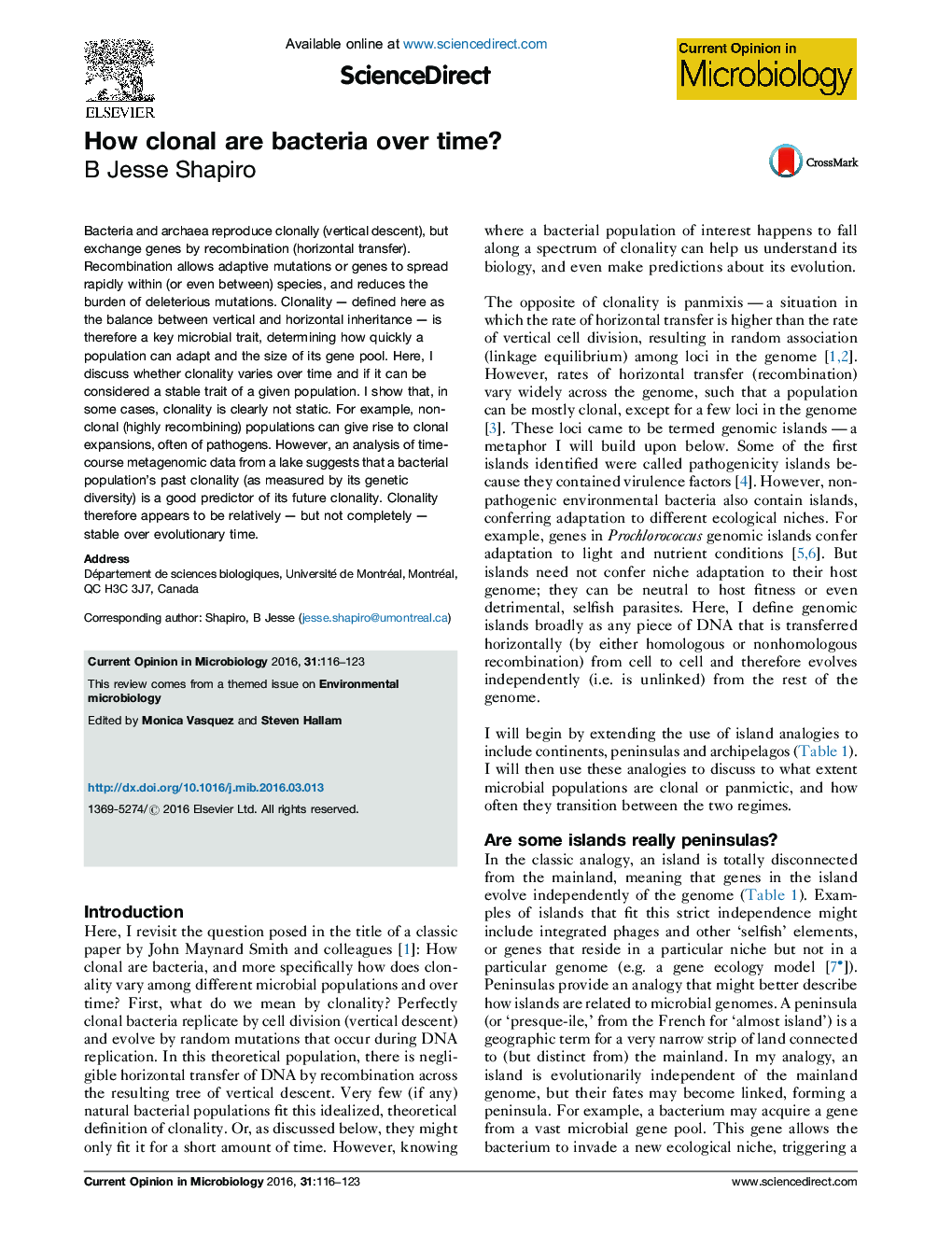| Article ID | Journal | Published Year | Pages | File Type |
|---|---|---|---|---|
| 6131533 | Current Opinion in Microbiology | 2016 | 8 Pages |
Abstract
Bacteria and archaea reproduce clonally (vertical descent), but exchange genes by recombination (horizontal transfer). Recombination allows adaptive mutations or genes to spread rapidly within (or even between) species, and reduces the burden of deleterious mutations. Clonality - defined here as the balance between vertical and horizontal inheritance - is therefore a key microbial trait, determining how quickly a population can adapt and the size of its gene pool. Here, I discuss whether clonality varies over time and if it can be considered a stable trait of a given population. I show that, in some cases, clonality is clearly not static. For example, non-clonal (highly recombining) populations can give rise to clonal expansions, often of pathogens. However, an analysis of time-course metagenomic data from a lake suggests that a bacterial population's past clonality (as measured by its genetic diversity) is a good predictor of its future clonality. Clonality therefore appears to be relatively - but not completely - stable over evolutionary time.
Related Topics
Life Sciences
Immunology and Microbiology
Microbiology
Authors
B Jesse Shapiro,
